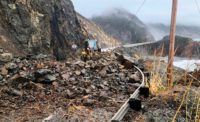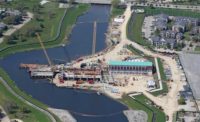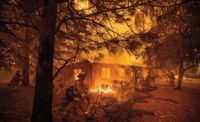Designing to address climate change will require a paradigm shift for engineers who must plan for rainfall, floods, drought and sea-level rise without historical models to guide them. An American Society of Civil Engineers (ASCE) committee is hoping to help engineers make that shift through a new manual of practice to be released later this year on adaptive risk management for climate and weather resilience.
ASCE would likely have produced such a manual at some point, but it was Bilal Ayyub, former chairman of the Committee on Adaptation to a Changing Climate, University of Maryland civil and environment engineering professor and manual author, who had the urgency to get the manual out to practicing engineers.
 Bilal Ayyub
Bilal Ayyub
College Park, Md.
ENR 10/23/17 p.17
A passionate effort will give engineers their first formal guidance when designing infrastructure to be more resilient to weather extremes.
“He was very determined,” says Ana P. Barros, current committee chair, professor of civil and environmental engineering at Duke University and one of the manual’s authors. Barros says the work done by fellow authors Richard N. Wright, also of the University of Maryland, and Ted Vinson, professor emeritus, Oregon State University, laid the groundwork for the manual, but Ayyub pushed it through.
Ayyub has long been a “guiding light” in risk analysis, says another manual author, Dan Walker, associate director at University of Maryland’s Center for Technology for Systems Management and a climate scientists who served in the Obama Administration. Walker says Ayyub, and others on the committee, are motivated by a passion to help the engineering community because there is no money available to translate scientific data about climate into viable engineering practices.
Ayyub says owners and engineers realize the need to plan for climate change. “Without having standards or guidelines, planners and engineers are improvising to meet needs.”
Committee members hope the manual will be adopted as an ASCE standard, and then will be adopted into building codes and as a reference standard. The manual does not present typical thresholds for design but provides guidance on how to model, analyze and estimate risk, uncertainty and weather extremes.
Ayyub, who has been named to a National Academies panel to review the fourth National Climate Assessment, says engineers can help address climate change by incorporating climate change requirements into their planning and design, sharing information on best practices and by helping prepare younger engineers to address a changing climate.





